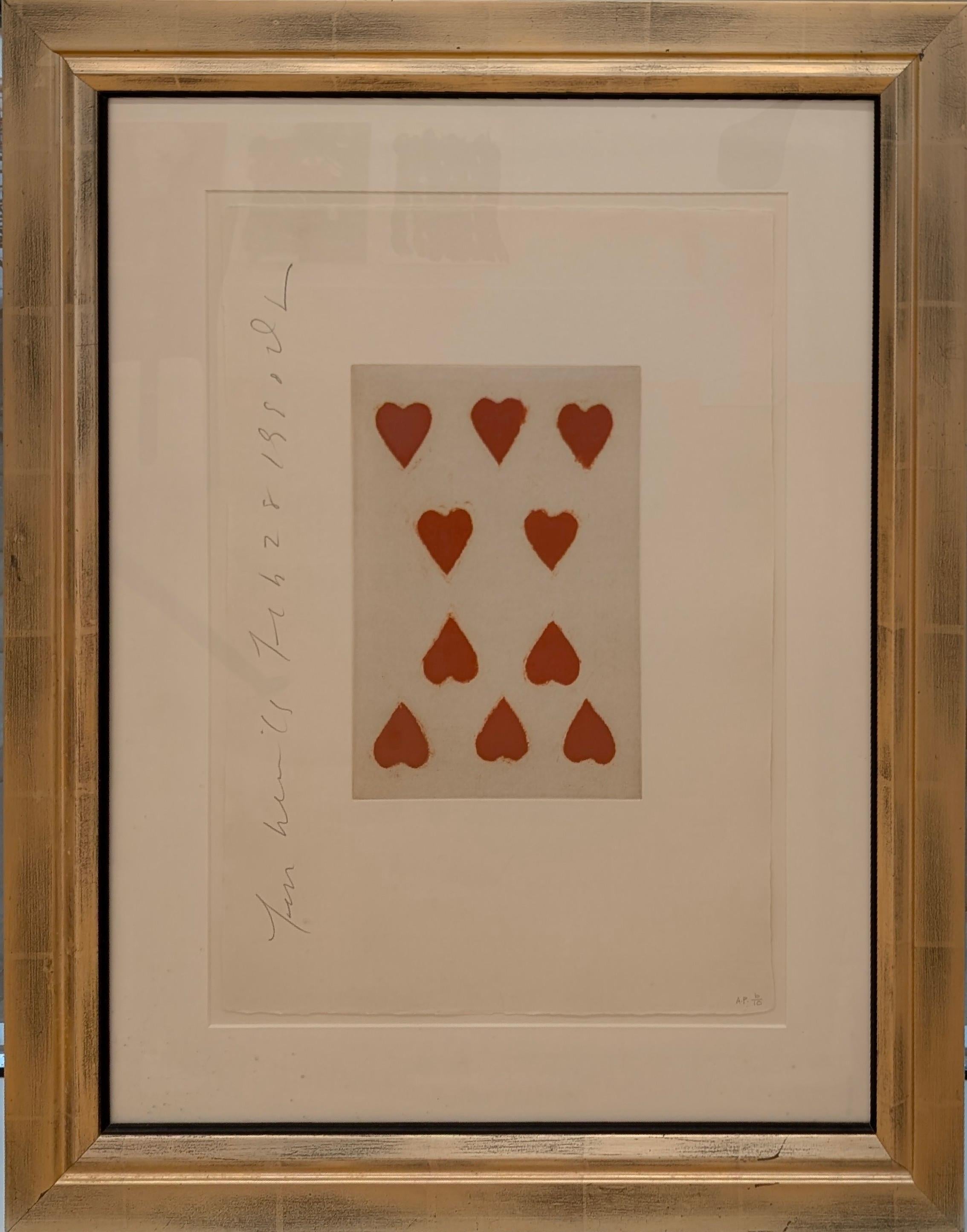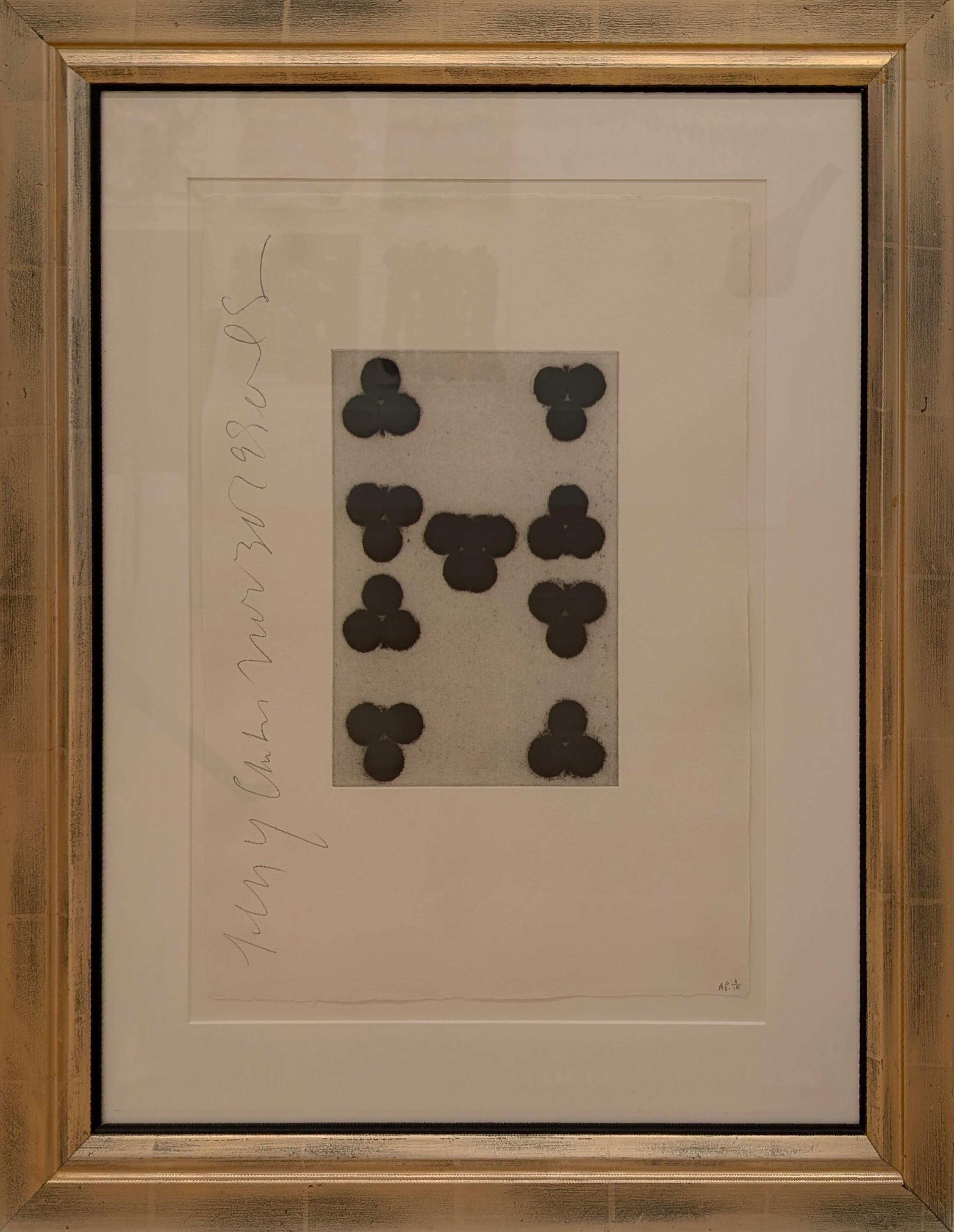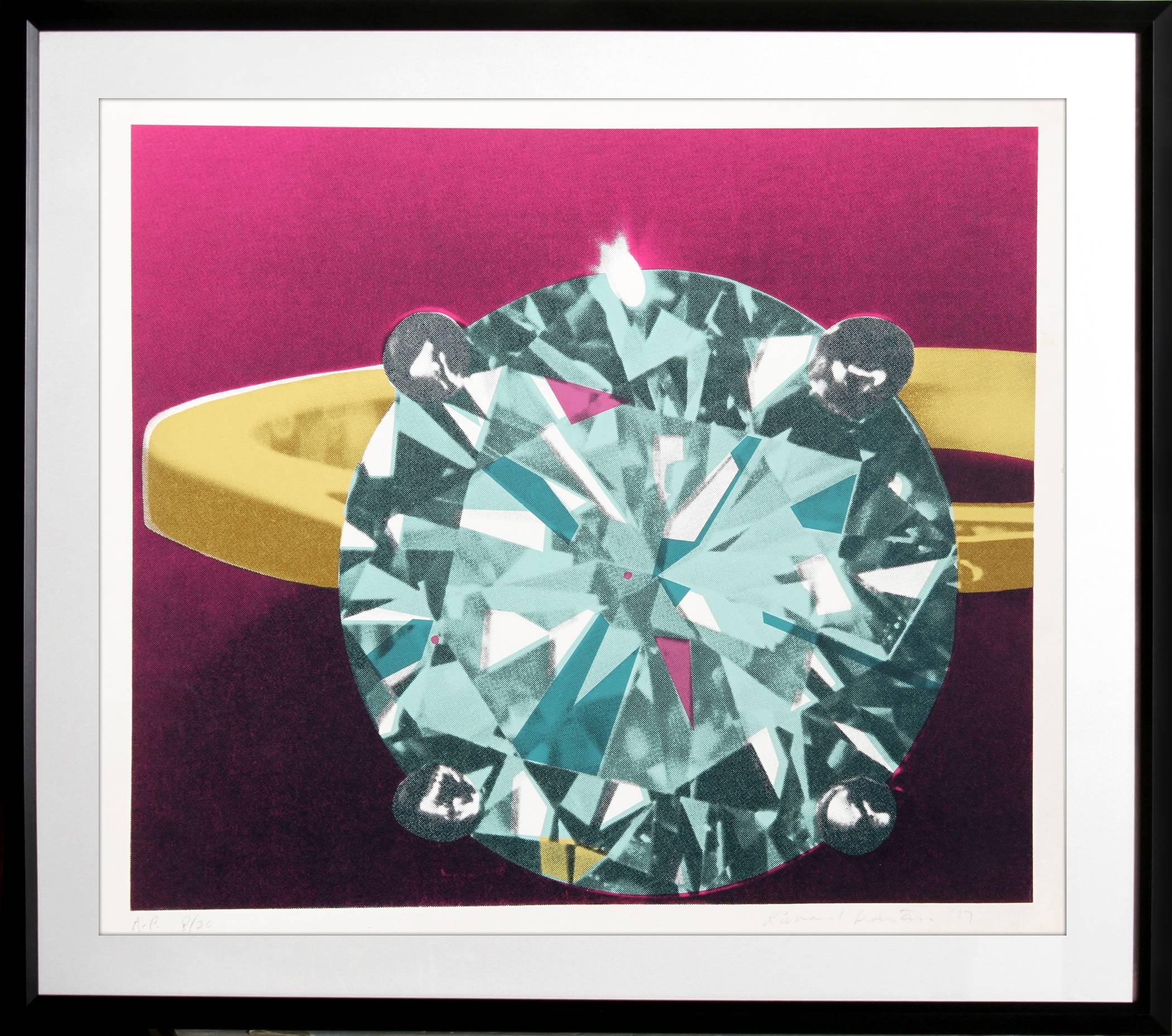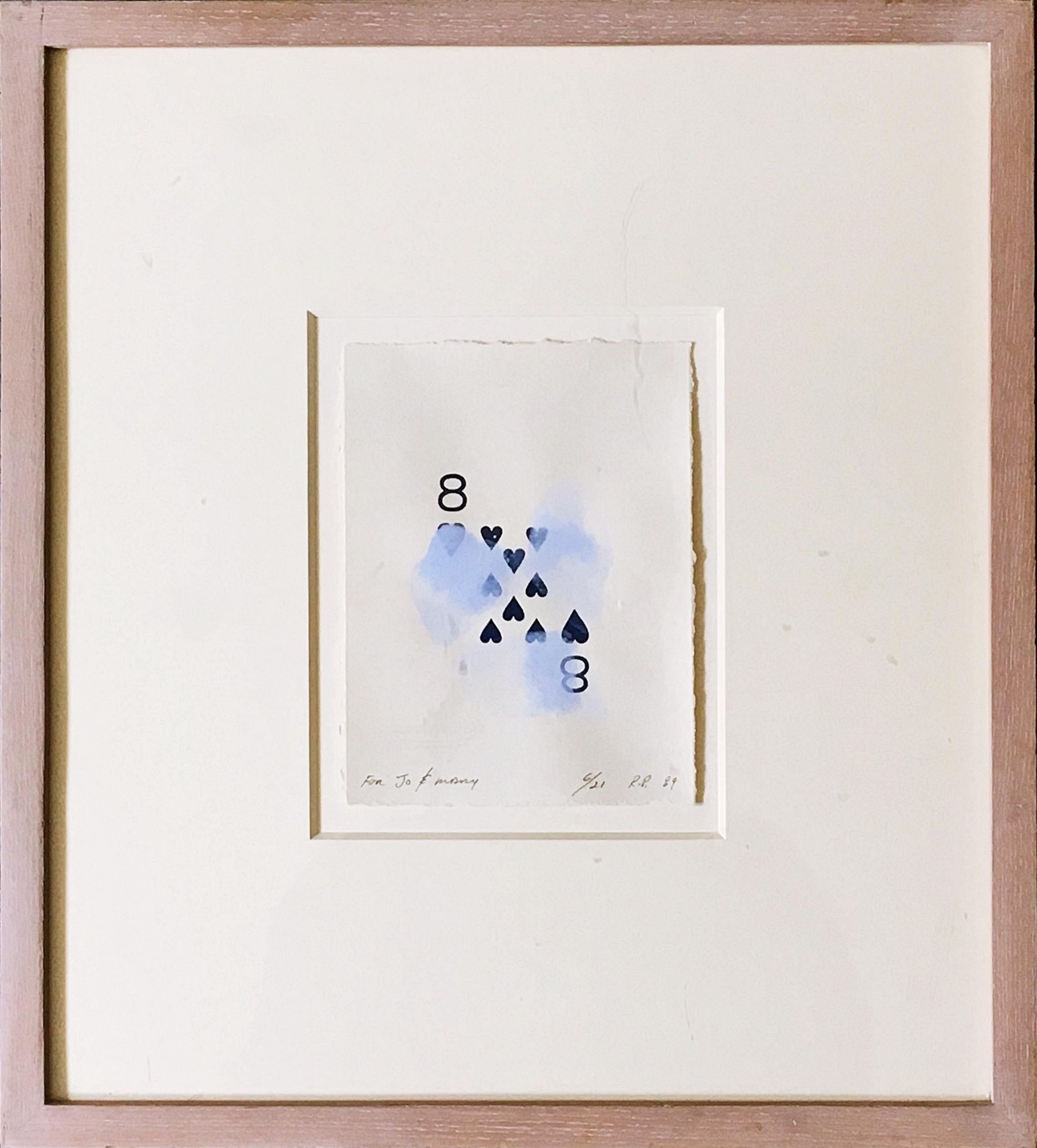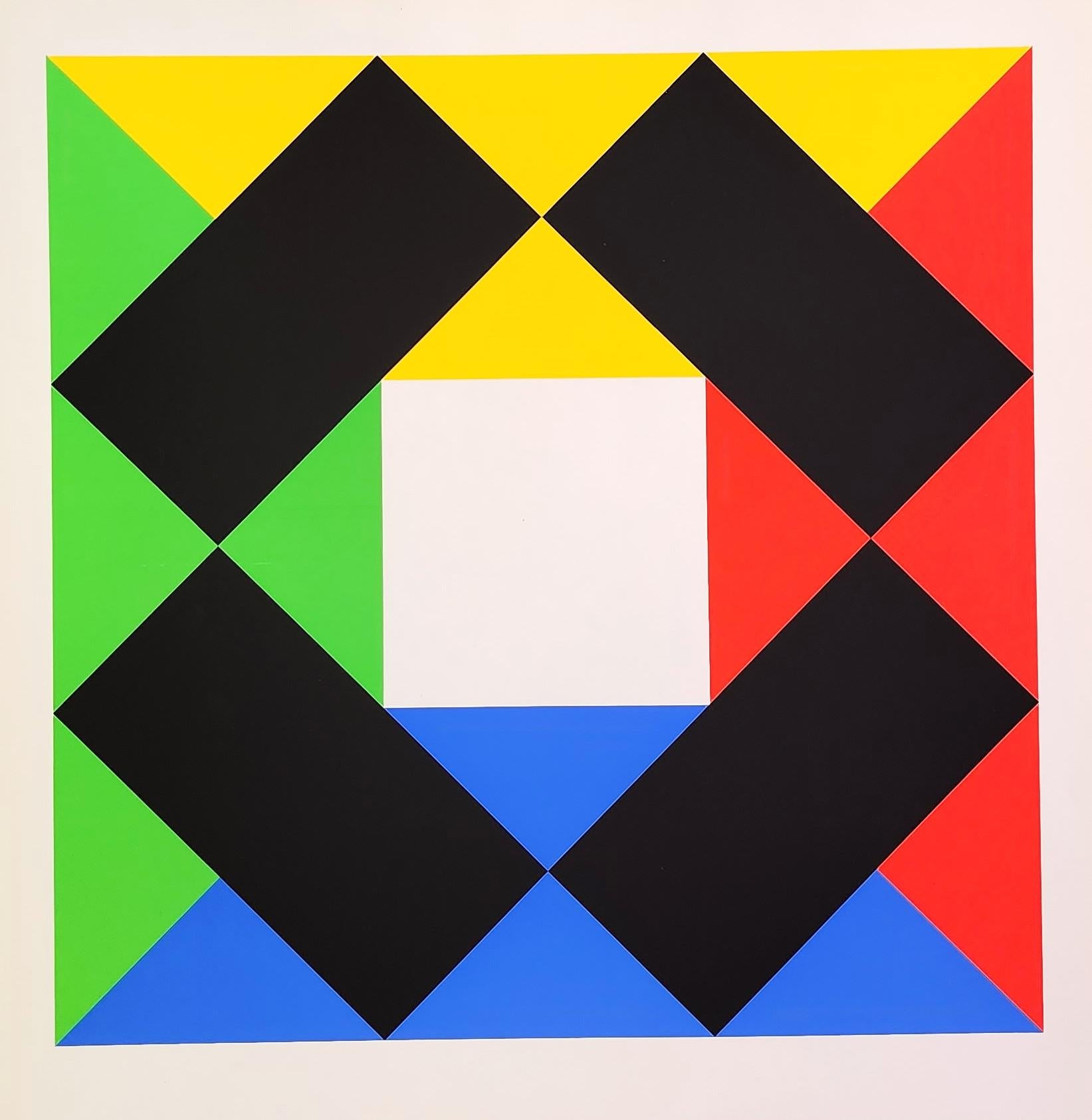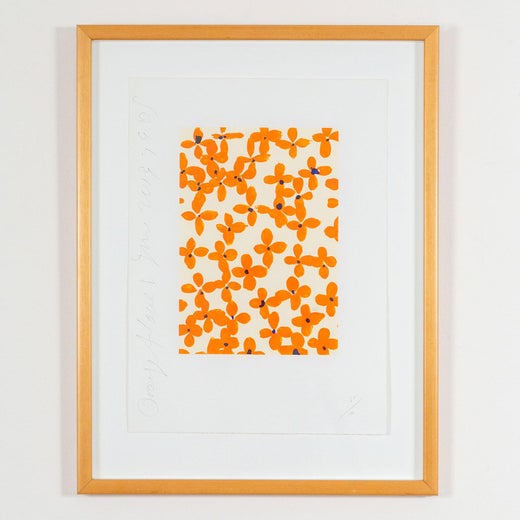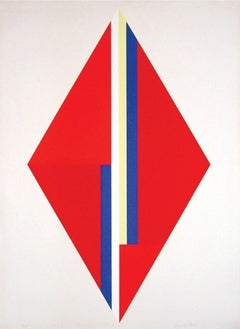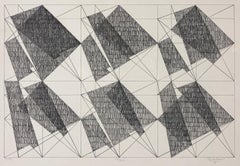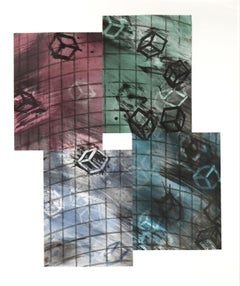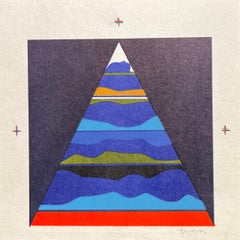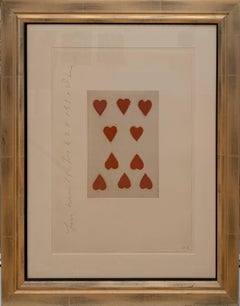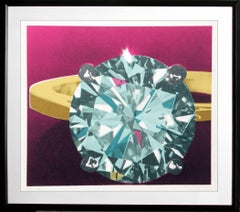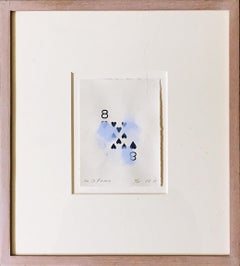Donald SultanOne of Diamond and Thirteen of Diamonds1990
1990
About the Item
- Creator:Donald Sultan (1951, American)
- Creation Year:1990
- Dimensions:Height: 25.5 in (64.77 cm)Width: 35.5 in (90.17 cm)Depth: 1 in (2.54 cm)
- Medium:
- Movement & Style:
- Period:
- Condition:
- Gallery Location:Missouri, MO
- Reference Number:1stDibs: LU74735819472
Donald Sultan
Donald Sultan is a distinguished painter, sculptor, and printmaker who rose to prominence in the late 1970s as part of the “New Image” movement in New York City.
Sultan has a unique artistic method and innovative approach to traditional subject matter. Known as Abstract Representation, Sultan’s paintings, prints and other art are characterized by the use of geometric black forms set against organic areas of bright color, thus bringing an abstract sensibility to his iconographic images of still life. Throughout his career he has revisited and reinvented still life, using images of lemons, poppies, playing cards, fruits, flowers, and other objects. Sultan’s lemons, a recurrent theme in his artworks, have in fact become an iconic image all over the world.
“All of the images of those dark pictures are really about the architecture in the paintings; they seem so massive and strong and permanent, but nothing is permanent,” Sultan has said. “The image in the front is very fragile, but it conveys the loaded meaning of everything that is contained in the painting.”
Sultan is considered to be at the forefront of contemporary art. Although his paintings are often classified as landscapes and still lifes, Sultan states that they are first and foremost abstracts. Besides paintings, drawings, and sculptures, he has created many editions. Sultan’s prints are unique: he uses specific materials like “flocking” to create expressive and powerful prints that are reminiscent of his forceful paintings. Since his first solo exhibition in 1977, Sultan’s artistic career has progressed rapidly; his works are part of the most prominent public and private collections to be found across the globe.
Find original Donald Sultan art on 1stDibs.
(Biography provided by Weng Contemporary — ArtXX AG)
- ShippingRetrieving quote...Shipping from: Missouri, MO
- Return Policy
More From This Seller
View AllLate 20th Century Abstract Abstract Prints
Lithograph
1970s Abstract Prints
1990s American Modern Abstract Prints
Lithograph
20th Century American Modern Abstract Prints
Lithograph
Late 20th Century Modern Abstract Prints
Screen
1970s Modern Abstract Prints
Etching, Aquatint
You May Also Like
1990s Contemporary Prints and Multiples
Handmade Paper, Carbon Pencil, Aquatint
1990s Contemporary Prints and Multiples
Handmade Paper, Carbon Pencil, Aquatint
1970s Pop Art Still-life Prints
Screen
1980s Contemporary Abstract Drawings and Watercolors
Mixed Media, Acrylic, Pencil, Graphite, Screen
Early 2000s Abstract Abstract Prints
Carbon Pigment
1970s Abstract Geometric Prints and Multiples
Screen
